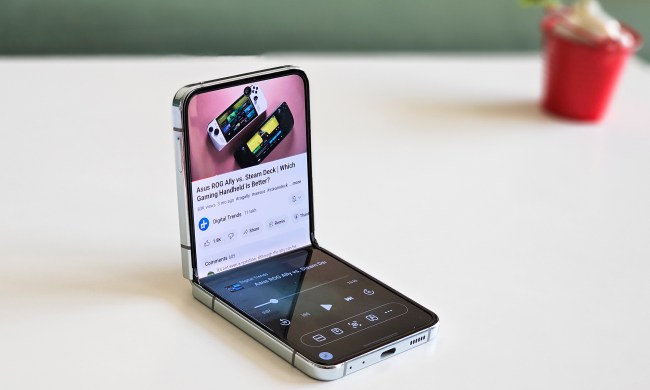
Summer is (officially) here and it will certainly come with a social media barrage as your friends and family members snap photos and videos of their fun in the sun. In order to share all of those Instagram-worthy moments with an adoring public (because did it really happen if you don’t post about it?), you’ll doubtless be relying on your mobile network’s upload speeds.
To help you better understand why some carriers can help you get your pics onto Instagram and Snapchat faster than others, OpenSignal has published a new explainer to help clarify why there’s such a huge discrepancy between the fastest and slowest 4G upload speeds.
In an era when content creation is just as important as content consumption, upload speeds are vital to our social media well-being. And in testing how well the top four national operators did in this metric, OpenSignal was surprised to find that the gap was “particularly wide.”
T-Mobile was the fastest when it came to LTE upload speeds, with an average rate of 7.5 Mbps. That is three times faster than the 2.5 Mbps recorded by Sprint. Verizon was in second place with 7 Mbps, and AT&T came in with an average 4G upload of 4.5 Mbps in our tests.
So why is all of this the case? For starters, because T-Mobile and Verizon have significantly faster 4G download speeds, it’s not a surprise that their upload speeds are faster as well. As OpenSignal explains, “Typically when an operator increases its 4G download speeds, its 4G upload speeds grow as well, as they’re both linked to a network’s total capacity.”
But seeing as Sprint and AT&T have similar 4G download speeds, why the big difference in upload? OpenSignal points to Sprint’s LTE technology, which leverages something called “time division duplexing, or TDD, to transmit data to and from devices.” These networks use the same spectrum for both uplink and downlink (unlike other cellular networks, which separate these two processes). And TDD is interesting in that its operators can “adjust the proportion of time intervals devoted to upload and download as they see fit,” which means that if Sprint sees that users are downloading more than uploading, or vice versa, it can stack its networks to meet this demand.
Sprint, for its part, notes that this strategy is “by design in order to give customers the best data experience,” a spokesperson told Digital Trends. “We know our customers download much more data than they upload — in fact, 80 to 90 percent of our network traffic is on the downlink. We’ve built our network to support this usage and make the most efficient use of our spectrum by applying more capacity to download speeds,” Sprint noted. “Because our network uses TDD-LTE we have the ability to use our spectrum asymmetrically, whereas the other carriers in the U.S. using FDD-LTE do not have this flexibility.”
However, as tastes begin to shift and folks begin looking to send more content to the web, Sprint may have to rethink its strategy after all. And it may start with its T-Mobile merger.
Updated on June 21: Added a statement from Sprint regarding its use of TDD-LTE.


